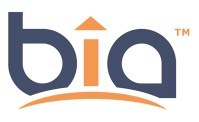
What to Consider and Include in Your Strategic Change Management Plan for Organizational Change
Leading transformational organizational change is a major initiative that requires good planning. Start by creating a business case for the change that illustrated leadership’s commitment and demonstrates the relevance to employees. Change leaders must diagnose the scope of change accurately and develop a clear plan of action that uses appropriate tools and resources to ensure successful implementation. The change plan must reinforce the behaviours necessary to create the culture that delivers what the business strategy requires for success.
When deciding to implement transformational organizational change, understand that you are embarking on a long journey that is both exciting and terrifying. Employees don’t ask to go on this journey. They may like what the possibilities are for the outcome but are also uncertain regarding the future and fearful of the unknown.
Creating a comprehensive Strategic Change Management Plan is necessary. It should consider all the various effects that the transformational change may have on the organization; including its systems, processes, culture and people.
Engaging employees early in the process helps uncover their fears and concerns, provides insight about what to expect and helps you determine your communication approach to get them on board. Here are some things to consider when developing your Strategic Change Plan for transformational organizational change:
Get Middle-Management on Board
Senior management are very clear about the organizational change effort and how it relates to the market and business strategy of the organization. However, this is usually not the case for middle management. They may not see relevance and meaning for the organizational change effort. In general, relevance occurs when employees see how something fits into the larger scheme of things. When employees understand how the organizational change contributes to both theirs and the business success—how it responds to organization’s vision, strategic imperatives and customers; they are more likely to perceive the change as relevant.
Traditionally, strategic understanding has been the foundation of the executive role and the role of staff was simply to execute the organizational change with blind faith. Today, most organizations are in a constant state of change in an attempt to keep pace with marketplace demands. Therefore, for staff to contribute fully, they too, must understand the relevance and see how it all fits together.
Executives and change leaders must come together to develop the strategy and direction for the organization. They must seek meaning in the organizational change; think strategically (not tactically) and commit to contributing to its success. I know change leaders (HR Directors and management) who were replaced because they were unable to find relevance and meaning for the organizational change effort in their organizations.
Impact of the Change on Unions
Most unions tend to resist change because they lack a true understanding of the need for the change. As with other employees, unionized employees need to understand the meaning and relevance of the change.
Some organizations fear their unions. HR departments stray away from managing controversial union employee issues, fearing a possible grievance. But union contracts always provide a provision to manage employee performance issues unresolved resistance occurs. Employees always have a right to grieve. This doesn’t mean they’re right. It’s important to consider the impact of your change initiative on your union and determine the possible resistors to change. Find ways to link them to the realities of the external environment and your key business imperatives so that union management better understand your case for change and the desired outcomes of your overarching initiatives as logical extensions of your business strategy.
Employee Engagement & Communication
Employee engagement is particularly important early in the organizational change process. It gives employees a say in shaping their future. It includes asking them: what they think success looks like, what they think the real breakthrough issues are and their best solutions and advice. It can shape the case for change, define a vision and desired outcomes, determine customer requirements, and provide input into the design of the solution. Essentially, this makes for a better solution and minimizes emotional upset in staff to generate a smoother implementation.
There are many large group meeting approaches to garner staff engagement and communication. One approach that I like to use is to hold employee change sessions that promote two-way communication. I sometimes call these sessions, “Coping with the Stress of a Change You Didn’t Want.”
During the sessions I organize staff into teams and ask them to respond to structured questions that focus on how they are feeling about the past and the present, giving them time to react to what they’ve heard, discuss or internalize what it means to them, and then to assess the implications on them and the organization.
I start by asking them:
“Think of a time in your experience, within your organization/department, when a change was handled poorly, a time when a fairly major change in direction, methods, policies etc. was attempted but back-fired or was implemented poorly or slowly and encountered real resistance.”
Each employee is asked to think about this question individually and record:
- The nature of the change
- How the change was initiated
- How it affected productivity and morale
- How it affected them and others
- What they disliked about the change
- What they liked about the change
Then discussion occurs in their teams. They will record their collective thoughts on:
- What is necessary to make change happen successfully? Or,
- What needs to happen to overcome this badly managed change?”
This process not only helps staff express feelings of loss, grief and anger and reflect on and share key experiences and legacies, but also gets their input for how to make this change happen successfully. This gives employees a sense of control. The outcome of these sessions is a list of what needs to be included in the creation of the Strategic Change Plan.
No doubt there will still be some scepticism: “We’ve done this before,” “They never listen to us,” “What’s the point” and so on. Therefore, it will be important for leaders to keep on-going communication with employees so that they are fully informed and aligned throughout the change process.
The Strategic Change Plan
An effective Strategic Change Plan should give consideration to a number of factors:
The Change Model
There is a commonly used Change Model that illustrates how most employees go through four stages when managing change. It begins with Denial, then moves to Resistance, Exploration and finally to Commitment.
Employees start in the first phase of the process – Denial. It can be seen in their “grapevine” communication that supports rumours and assumptions. They are suspicious, doubtful and questioning. They will move into the other stages once they see the Strategic Change Plan. The plan will be based on all of the input from the staff sessions. When it is communicated to the staff, they will see how impactful their input was on the final plan. This helps them to build commitment and pushes them more rapidly through the Resistance and Exploration phases. They usually move into the Commitment phase more rapidly. However, not everyone will move through these phases at the same pace.
Organizational Change Governance
As part of the Strategic Change Plan, change leadership need clear and thoughtful governance. What roles are needed to lead and carry out the organizational change? Who will fill these? Who will have authority for decisions? What will be the charter for the people in charge? How will they meet, communicate, manage the information of the effort, and interface with operations? There will need to be agreement on decision levels of authority, and the decision style and process that best supports the organizational change.
Common Approach and Infrastructure for Change
There is a tendency for leaders to rush to action and forget to provide thoughtful oversight, methodology, tools and infrastructure to ensure that all organizational change is led effectively and produces the best outcome. Too often, organizations have multiple and competing approaches to change with no common language or tools. This makes it difficult to identify how much change is happening or how it is being resourced. Executives need to establish strategic disciplines and management protocols to ensure that change leaders are able to manage the organizational change with conscious intention.
Accurately Defining the Scope of the Organizational Change
One of the major failures of Strategic Change Plans is definition of scope; too often leaders under estimate what organizational change entails. In reality, when you change structure, there can be a significant impact on organizational systems and processes, decision-making, knowledge management, and technology. As well, there is considerable impact on the human factors of organizational culture, working relationships and behaviour.
Evolving from the old and transitioning to the new takes time; coaching is often necessary and people need to rebuild mastery to reconnect and feel part of something “new.” The Strategic Change Plan must reinforce the right behaviours. It must consider adequate capacity for the organizational change by setting realistic timelines while considering employee workloads. One of the most prevalent challenges in leading organizational change is the capacity issue. Adding additional tasks on top of heavy workloads adds significantly to employee stress, morale and performance.
Organizational Culture
In transformational change the new strategy, structure, systems and processes and/or technology that are being implemented are so different from the current state that they require people to adopt new ways of being, working and relating in order to perform effectively. In order to shift organizational culture, leaders must want it and be fully committed to designing it. The Strategic Change Plan should consider including an Organizational Culture Assessment and a plan to establish positive behavioural change for everyone; including leadership that will deliver what the business strategy requires for success and see that the changes take place.
Conclusion
A comprehensive Strategic Change Plan requires considerable thought and input. It must start with a strong business case for change. Leadership must be committed to it. There must be clarity for the people involved so they perceive the change as relevant. There needs to be input at the early stages from employees. Change leaders must diagnose the scope of change accurately and develop a clear plan of action that uses appropriate tools and resources to ensure successful implementation. The change plan must reinforce the behaviours necessary to create the culture that delivers what the business strategy requires for success.
The leadership team must remain positive through this process of change despite resistance. What they initially hear and what they see is normal. If they saw a huge ground swell of enthusiasm and support that came out of the change sessions, I would be suspicious. Most people say they would love to see change – as long as it doesn’t affect them and they aren’t expected to do anything. However, we are all capable of change if we see the rewards from it.




